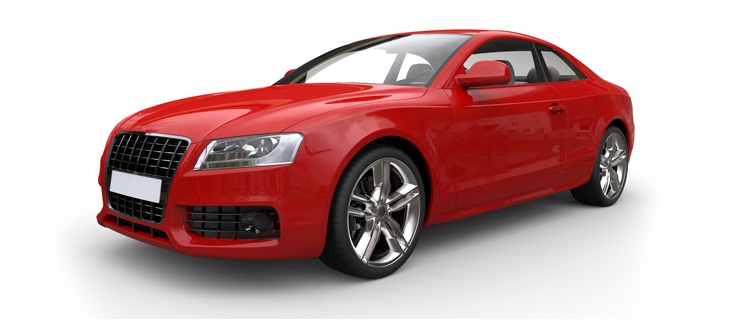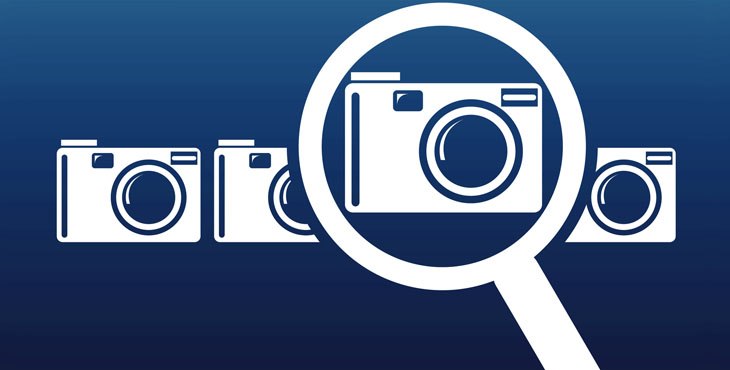Photography is magic because it gives you the ability to freeze a moment in time and keep it forever. The remarkable nature of photography goes much deeper than this, though. The images that we take can connect to thousands, if not millions, of people around the world. Our photographs can make them feel something. You have a real ability to impact the world with your pictures.
It should be emphasized that the essence of outstanding photography extends beyond merely snapping the perfect shot; expert editing is equally vital in this artistic process. It’s worth acknowledging that not all photographers possess a flair for editing. In these instances, they can turn to external outsourcing firms or independent freelance editors. These professionals usually provide their expertise at affordable prices. Plus, many of these service providers have niches in specific editing software, such as Lightroom or Photoshop, thereby significantly improving the allure and quality of your photographs. Please continue enjoying this blog, next focusing on the nuances of slow shutter speed photography.
How to do slow shutter speed photography?
Slow shutter speed photography can be done through the following procedures :
- Adjusting your shutter speed,
- Using a high ISO,
- Panning, and
- Chronophotography.
Shutter Speed
When the subject is moving quickly, take a shot of it to select a fast shutter speed. Utilize a shutter speed that is at least 1/500th of a second or higher. Fast shutter speeds may produce underexposed photographs as these limit the amount of light that comes into your image sensors.
Select a low f-stop to increase the aperture. This action will assist you to counter the low light you get from the fast shutter speed. Use a flash with your motion shots to counter the low light conditions when you use faster shutter speed.
Use a High ISO
By using a high ISO, you could increase the shutter speed and aperture of your camera and decrease the likelihood of getting blurry or dark photos. If you do use high ISOs, you could get a grainy picture that has a lot of digital noise.
Panning
With panning, you will follow a moving object with your camera to get slow capture photography.
Chronophotography
This type of photography allows you to depict movement by capturing several frames of a moving subject and then showing them alongside each other to imply successive phases of motion. To take successful Chronophotographs, use a tripod and set your camera to shoot continuously. Join these photographs together in post-production.
What is Slow Shutter Photography?
Slow shutter photography is a technique in which the camera’s shutter is left open for a long time to take advantage of how a longer exposure time blur moving subjects and captures moving points of light.
Slow shutter photography techniques
Here are some techniques used for slow shutter techniques.
Technique 1: Motion blur
‘Motion blur’ occurs when an object moves so quickly, in terms of the shutter speed of the camera, that it appears as a blur. This blur can happen accidentally with unwanted results, such as when a portrait subject moves just as the shutter goes off. Use the same effect to your advantage: control your shutter speed, and suddenly motion blur becomes your tool for expressing movement.
Shutter speed
Start with 1/10 second if you are not sure where to start. The correct shutter speed to use will depend a lot on how fast the subject is moving. The 1/10 second speed creates enough blur even if the subject is walking and keeping your background still. However, make sure that image stabilization (IS Mode) is on, the camera is steady, and the telephoto end of the lens is not used.
ISO speed
Use ISO on ‘auto’ if you’re not sure about how to adjust the speed yourself.
Focus
Focus the camera on the background of your shot. Alternatively, pre-focus on the spot where the subjects will walk. The area that you focus on will be still while the other parts of the image will be blurred.
Technique 2: Panning
Panning keeps the subject relatively sharp while the background is blurred.
Shutter speed
To start with, try 1/10 second shutter speed.
Move the Camera in Sync with The Subject
In slow capture, photography panning needs you to have a lot of stability and coordination. If the speed at which the subject is moving matches the speed at which you pan the camera, the moving subject will seem to be still, and the still background will appear blurred. This technique is perfect for creating a sense of speed.
Focusing
With this technique, you want your subject to look relatively sharp, which means your focus must be on the subject. You can do this by:
Option 1: Using the same pre-focus technique
- Step 1: Envisage, where the subject will pass. Focus on that location.
- Step 2: Keep the shutter button pressed down halfway as you wait for the subject to approach. However, if this is difficult, switch your camera to manual focus because this locks the focus.
- Step 3: When the subject goes into the spot, depress the shutter fully.
Option 2: Utilizing your camera’s AF tracking function
If you have a newer, higher-end camera, you can customize the tracking characteristics to suit the subject and scene. On some older camera models, tracking might not work as well for certain scenes.
Technique 3: Long Exposure
Shutter Speed
To capture the appearance of light trails have a shutter speed of at least 1/15th of a second.
Aperture
Use some combinations of settings to achieve the same exposure. Each of these settings also influences other image properties. For example, aperture affects the field, shutter speed affects motion blur, and ISO speed affects image noise.
ISO Speed
For optimal results, set the camera to B “Bulb” shooting mode and your aperture between f/2.8 – f/4. Press the remote to open the shutter. Maintain your ISO at 100 to preserve the digital noise at minimal levels.
Flash
If you are doing slow shutter speed photography, the camera will not prevent you from setting shutter speeds, which are so slow that too much light enters the camera and results in a completely overexposed shot. This example means that you need to be careful when using a flash with long exposure photography.
Common Slow Shutter Speed Problems And How to Solve Them
Here are some problems that photographers face during slow capture photography:
- 1. The F-Number Keeps Flashing on and Off
In TV mode, this error means that the shutter speed set is so extreme that an aperture setting outside the camera’s range is needed to ensure correct exposure.
- 2. I Can’t Set the Shutter Speed To 1/10 Sec, No Matter What I Do
Usually, this happens on sunny days because there is so much light entering the lens that the camera does not allow you to set a shutter speed slower than a value. This attempt of a camera is to prevent shots from coming out overexposed.
- 3. Will Changing Lenses Means I End up With Dust on The Camera Sensor?
Change lenses when you need to but exercise a few precautions such as always switching the camera off because this takes away any static charge from the sensor that can attract dust particles. If it is possible, choose a dust-free, non-windy place to change your lenses in or shelter yourself from the wind.
- 4. Should I Use A Skylight Filter On My Lens?
Skylight filters reduce the cool, somewhat blue color cast that you might see in some of your shots. It is especially true of those which are taken in the shade with a backdrop of a blue sky. As today’s cameras have sophisticated white balance abilities, this is less critical than when photographers were using film.
Skylight filters also protect the front element of the lens from accidental scratches and splashes. If your camera is permanently in an orderly studio, you don’t have to worry about this type of filter. However, a skylight filter is worth getting if you do most of your photography outdoors.
- 5. Should I Delete All or Format to Remove Pictures from a Memory Card?
As for formatting, the memory card is quicker; this is nearly always the better option. However, if images are labeled as protected during playback, these will not be erased when you press Delete All. However, the images will be wiped if you format the card.
- 6. Should I Use Continuous or Auto-Reset for File Numbering?
The numbering system will resume from where it left off if you use it continuously for file numbering, especially when you swap memory cards. The advantage of using a continuous number is that even over long periods, all of your camera’s image files will have unique file names.
- 7. What’s the Difference Between Raw and JPEG Image Quality Settings?
JPEGs are high-street quality prints. Raw files are the unedited images that you will need to edit in Photoshop or a similar program.
Essential Equipment for Slow Shutter Speed Photography
Producing harmonious exposure using the aperture, shutter speed, and ISO is a complicated procedure. As soon as you decide about one element, you’ll have to make a compromise with another. The trick to balancing, what photographers’ term as ‘The Exposure Triangle’ is to get all three elements working harmoniously, so you get the results you want. Here you need a camera that allows you to adjust the ISO manually, aperture, and shutter speed. Also, it’s worth learning about the basics of shutter speed, what an aperture, and ISO.
A Tripod
It is tough to work without a proper tripod when you are working with slow shutter speeds. A tripod is your best solution for maintaining the stability of your camera.
Neutral Density Filters
To work long exposures in daylight, you need neutral density filters as this type of filter reduces exposure without affecting color balance or contrast.
In conclusion, slow shutter speed photos can create a remarkable sense of motion in your images, making them stand out. Utilizing a low shutter speed, for instance, enables the camera to gather light over a longer period, resulting in beautifully blurred motion trails against a sharp background. This is achieved through managing the shutter speed in camera settings, which can be adjusted according to the desired effect. For portraits, it’s generally recommended to go for a faster shutter speed to capture crisp and clear images of the subject.
However, the best shutter speed for portraits can vary based on the available light and the creative effect you wish to achieve, such as a blurry background or a frozen moment in time. Remember, experimenting with shutter speed can lead to some amazing results, so don’t be afraid to try different settings.
-Smart Photo Editors

